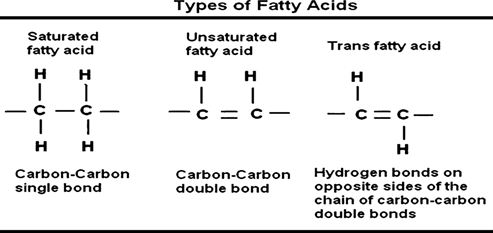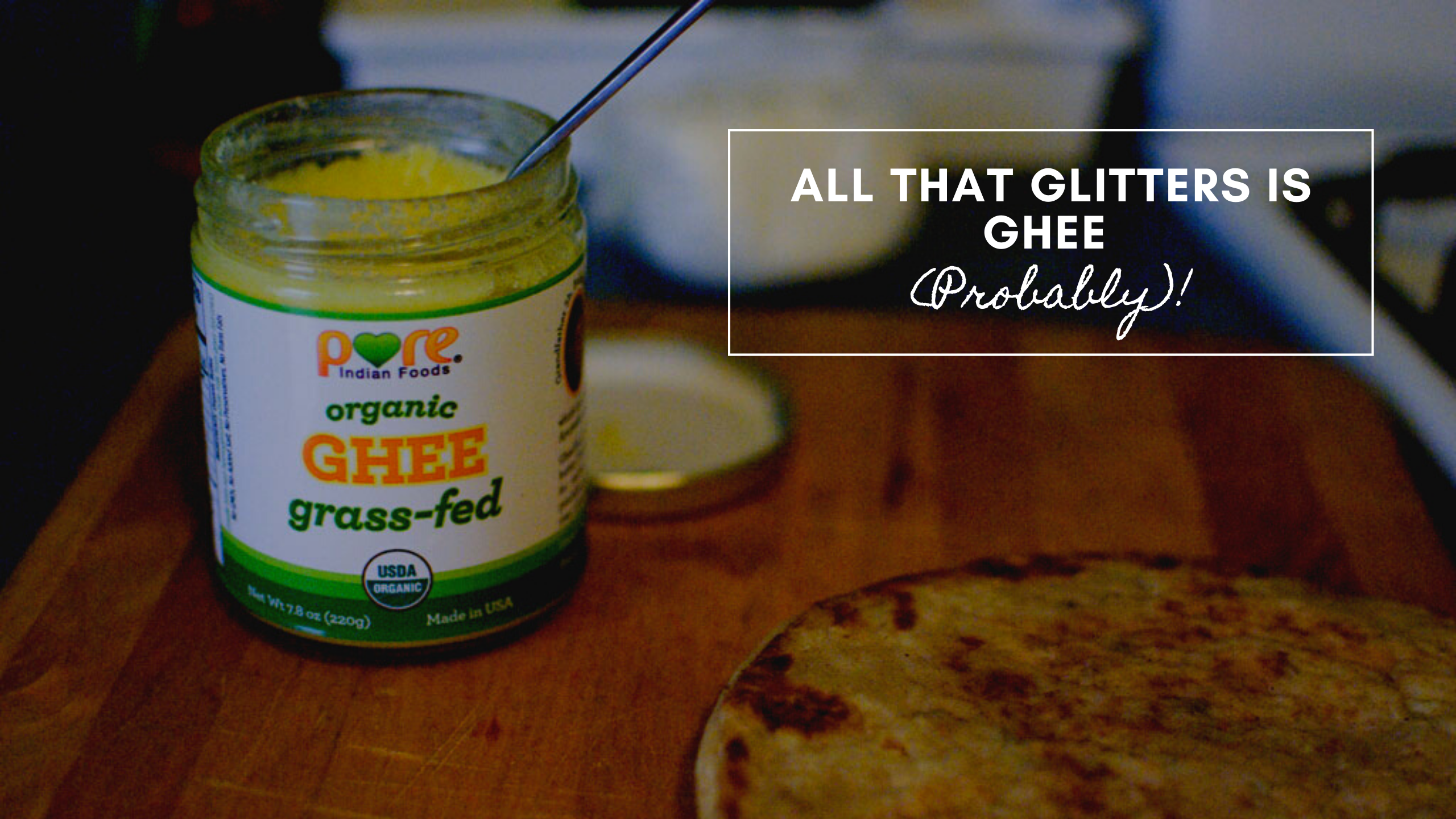All That Glitters is Ghee (probably)!
Last Updated on February 17, 2023
Ghee
Hot golden liquid on freshly prepared piping hot yellow dal, on your chapatis, in your halva, or in your coffee first thing in the morning; however you like to consume ghee, the irresistible and versatile golden elixir, you know it just makes everything a thousand fold better than before. For those of you unaware of how ghee tastes, maybe this article will enlighten you and encourage you to try to make it at home.
How is ghee made?
Ghee, traditionally made with cow’s milk, is a lipophilic dairy product, similar to clarified butter. It originated in ancient India, when storing butter due to the hot climate was an issue as butter goes rancid at higher temperatures. To solve this issue of shelf life, ghee was created.
Ghee is made from heating butter first at 90 degree Celsius, or low heat setting to evaporate the water. Once the water has been evaporated, the milk solids settle at the bottom. At this stage, the heat is turned up to medium-low setting, at 120 degree Celsius to brown the sedimented milk solids. Then the prepared ghee is taken off the heat to cool. The golden liquid ghee is then filtered through a cheesecloth to ensure all the milk proteins have been removed. Ghee is purely liquid at higher temperatures, has a nutty flavor and has a deep golden color, but as it cools, it develops a grainy solid form and looks yellowy-white, much like butter.
Is it the same as clarified butter?
Clarified butter is almost the same as ghee, although heated at higher temperatures for a faster result. Clarification of butter stops at the stage where the milk solids separate and sink to the bottom, while ghee is heated at a slower rate and stops after the browning (not burning) of the sedimented milk solids.
Clarified butter is healthier for cooking than butter, just like ghee, as these have a higher smoking point (temperature at which heated oils or fats start to smoke) at 250 degree Celsius, than butter which has a smoking point at 175 degree Celsius.
Physical and Chemical Properties of Ghee
Ghee consists of more than 99% milk fat; the rest being water and other minor components such as vitamins. Chemically, cow’s milk ghee consists of glycerides, free fatty acids, phospholipids, sterols, sterol esters, fat soluble vitamins, carbonyls, hydrocarbons, and carbenoids. There are many triglycerides present, each of which has a central backbone called glycerol with three fatty acids attached to it. The properties of these fatty acids impact the behavior of the fatty acids and triglycerides as a whole. The two most common fatty acids in ghee are myristic acid and oleic acid.
Since ghee is prepared at low heat, it retains more vitamins and minerals. Ghee is a source of Vitamin E, Vitamin A, antioxidants, and other organic compounds.
Ghee is considered to be a good cooking medium since its smoking point is high. However, research shows that heating ghee may oxidize the cholesterol present in it, and oxidation of cholesterol is linked to several adverse health effects including heart disease and cancer. The temperature of storage may also lead to oxidation of ghee, turning it to an off-shade of brown. Ghee undergoes crystallization at cooler temperatures, with the formation of solid, semi-solid and liquid layers.
The caloric value in 1 teaspoon of ghee, i.e. 4.2 grams of ghee is 42.
Shelf life of Ghee
Ghee has a longer shelf life as compared to butter, when stored in an airtight container. It can be kept at room temperature for extended periods of time. Keep it in a cool, dark, and dry cabinet to avoid oxidation. Heat and liquid can oxidize or spoil ghee. Spoilt ghee can smell and taste sour. In such cases, ghee must not be consumed.
Health Benefits of Ghee
Ghee has a high concentration of monounsaturated fatty acids (MUFAs) and some polyunsaturated fatty acids (PUFAs) which support a healthy cardiovascular system. Ghee increases bioavailability and absorption of some healthy vitamins and minerals. Ghee is considered to heal intestinal wall, reduce risk of colon cancer, as it has butyric acid, which balances healthy gut bacteria, while reducing candida overgrowth. Although ghee is considered beneficial for health, it is recommended to have no more than 3 teaspoons (approximately 13 grams) per day. As with any fat, excessive intake of ghee may lead to weight gain and deterioration of heart health. Overuse of ghee can cause indigestion and diarrhea, as it also acts as a laxative.
Types of Ghee- is there a vegan alternative?
The largest producer of ghee is a company in India called Parag Milk foods, which produces their ghee under the product name Govardhan Ghee, made of cow’s milk. Ghee can be made of other animal milks, such as buffalo, goat, sheep, or even camel. Indian alternative medicine, Ayurveda, recommends using A2 cow, which is the Indian origin cow, for the best health benefits that ghee has to provide.
There are some other varieties of ghee such as spiced ghee, in which spices such as garlic or herbs are infused in ghee for flavor or health benefits.
There is a vegan alternative to ghee known as Vanaspati ghee, which is partially hydrogenated vegetable oil. It is often used as a cheaper substitute for ghee. In India, Vanaspati ghee is generally made from palm oil. Vanaspati ghee was first imported by a Dutch company called Dada, in 1930’s. It gained popularity, and the sole Indian manufacturers then, Lever Brothers Ltd (now Hindustan Unilever) changed the product name to ‘Dalda’, which is how it is known in India till date.
This substitute is very similar to ghee in texture and appearance, yellowish white and grainy. It also has a longer shelf life as compared to its parent vegetable oil.
Vanaspati ghee has no health benefits since it is hydrogenated oil comprising trans fats, unlike cow’s milk ghee.
How is Vanaspati ghee made?
Vanaspati ghee is made by forcing hydrogen gas into oil at optimum temperatures and pressures, in presence of a catalyst, such as nickel. The hydrogen molecules break the multiple carbon-carbon double bonds in the unsaturated fatty acids and attach themselves to the carbons as shown below in Figure 1.
Figure 1: Showing the hydrogenation of unsaturated fats to saturated fats.
When all the hydrogen molecules replace the carbon- carbon double bonds, the product formed is a fully saturated hydrogenated fat. If only some molecules were replaced, it is known as partially hydrogenated fat.

The hydrogenation process of unsaturated fats turning into saturated fats
What are saturated fats and are they all bad?
Unsaturated fats have one or more double bonds. They are typically liquid at room temperature, such as olive oil. MUFAs and PUFAs reduce harmful LDL cholesterol levels and provide nutrients that your body needs to develop and maintain your cells.
Saturated fats comprise carbon-hydrogen bonds, and no carbon-carbon double bonds. Due to their chemical structure they are solid at room temperature. Excess consumption of certain saturated fats can cause buildup of plaque in the arteries, hardening them. This can lead to heart disease. However, most saturated fats are not bad, they are even necessary for our cardiac health, such as coconut oil and ghee. These oils are a source of short-chain fatty acids which are easier to digest than long-chain acids. Short-chain fatty acids help to strengthen and develop cell membranes while long-chain acids increase risks of blood clots and cancer.
For a healthy lifestyle it is recommended to have more unsaturated fatty acids and less of saturated fatty acids, although having both in moderation is key.
Ghee is comprised primarily (65%) of saturated fat, and the rest are PUFAs and MUFAs, including omega-3 (DHA) and omega-6 (CLA).
Trans fats, are saturated fats with hydrogen bonds on the opposite side of the carbon chain, shown in Figure 2. They are formed by hydrogenation of unsaturated fats and have a semi-solid or solid form. Apart from vanaspati ghee, other products made using hydrogenated fats include margarine and lard.

Types of fatty acids
Conclusion
So ghee really is like a golden elixir, doesn’t it? Almost tempting to go and eat some right now, maybe with toast! Although ghee processing removes the lactose and casein present in milk, some people may be sensitive to ghee if they are allergic to dairy products. Do be careful if you plan on consuming ghee and are sensitive to dairy products.
A good takeaway message on consumption of ghee stems from an old Tamil (an Indian, South Asian language) phrase, which roughly is translated to, ‘An excess of anything becomes poisonous, even an elixir”.

About the author: Deeya Kashyap is an MSc. Food Technology graduate from Wageningen University & Research, Netherlands. She is an enthusiast of sustainable and healthy foods with a borderline obsession with coffee.
Subscribe to our newsletter for details on mentorship sessions, workshops, webinars, as well as career and job fairs across Canada and the US!
References
https://time.com/5571810/is-ghee-healthy/
https://www.thespruceeats.com/what-is-ghee-995696
https://veganscult.com/is-ghee-vegan/
https://draxe.com/nutrition/ghee-benefits/
https://en.wikipedia.org/wiki/Parag_Milk_Foods
https://www.thepioneerwoman.com/food-cooking/recipes/a91575/how-to-make-ghee/
https://www.thespruceeats.com/smoking-points-of-fats-and-oils-1328753
https://www.sciencedirect.com/topics/agricultural-and-biological-sciences/trans-fatty-acids
https://healthfully.com/coconut-oil-ingredients-6178745.html
https://www.verywellhealth.com/difference-between-saturated-fats-and-unsaturated-fats-697517
https://academic.oup.com/ajcn/article/102/1/40/4564241?login=false
https://doi.org/10.1136/bjsports-2016-097285
https://link.springer.com/article/10.1007/s11883-010-0131-6
https://www.heart.org/en/health-topics/cholesterol/hdl-good-ldl-bad-cholesterol-and-triglycerides
https://www.heart.org/en/healthy-living/healthy-eating/eat-smart/fats
Ghee, its chemistry and processing, N C Ganguli, M K Jain, 2010
Header Image from: ghee by Howard Walfish


leave your comment